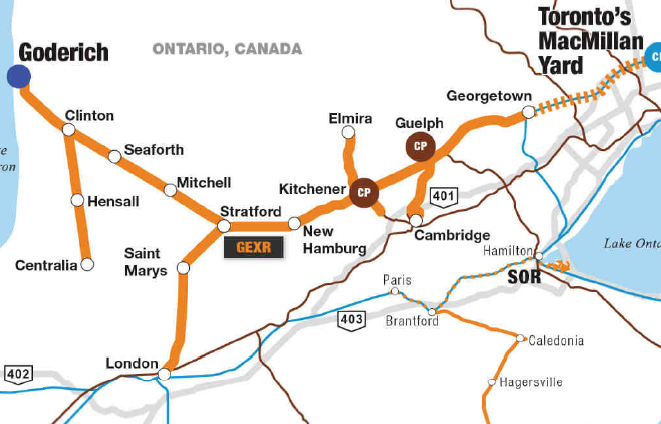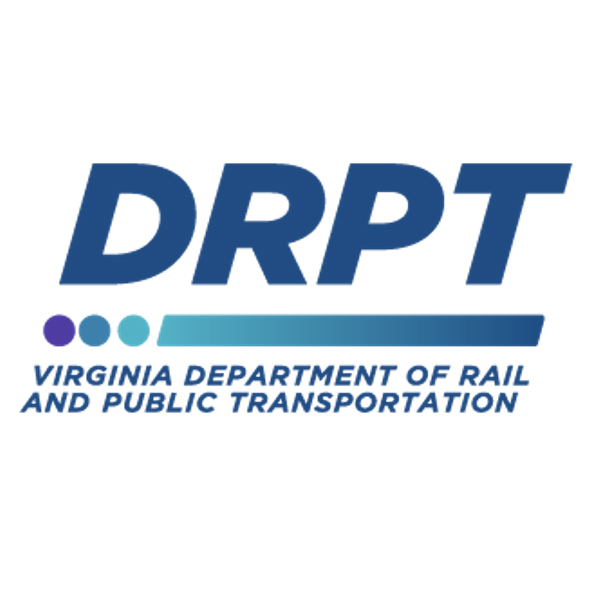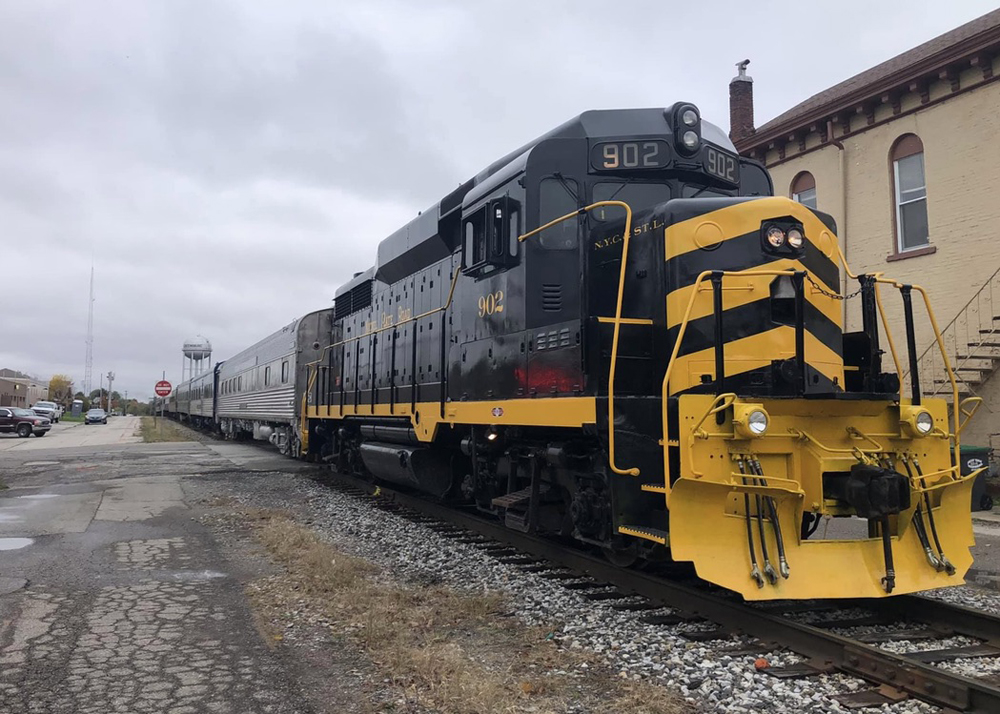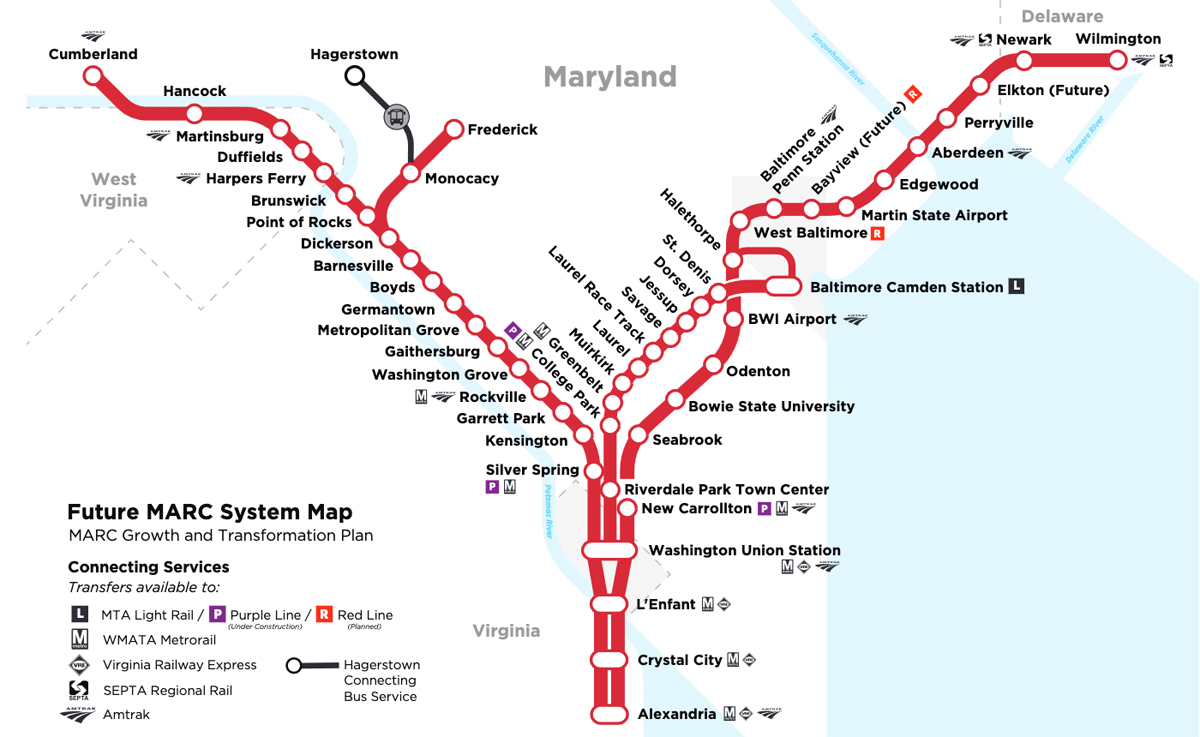The Southern Ontario Railway, which operates 46 miles of track between Nanticoke and Paris, Ont., as well as a separate industrial operation in Hamilton, Ont., and the Goderich-Exeter Railway, which operates 184 miles of track between London and Toronto, are the railroads involved.
Southern Ontario
The Southern Ontario Railway was a Raillink Canada Inc. property, the company founded by shortline pioneer Tom Payne, who established the first modern shortline railroad in Canada with the founding of the Central Western Railway in 1986.
In 1997, Raillink Canada expanded by leasing the Hagersville subdivision of the CN for 21 years between Brantford to Nanticoke with running rights to Paris for interchange. In December 1997, Raillink was granted the lease of a yard and industrial track in Hamilton, and both lines were merged into the Southern Ontario Railway.
Goderich-Exeter
The Goderich-Exeter Railway between Stratford and Goderich, Ont., was founded in 1992 with a purchase of the Goderich and Exeter subdivisions from CN by Railtex for $4 million. In 1998, the Goderich-Exeter Railway expanded significantly by adding the CN Guelph subdivision and all associated branch lines to its network, with a 20-year lease adding 100 miles of track and tripling the size of the Goderich branch. Both the Southern Ontario and Goderich were merged into Rail America by 2000 after acquistions of Raillink Canada Inc. and Railtex by Rail America.
The railroads have been operated by Genesee & Wyoming Canada Inc. since 2012. Neither G&W nor CN have responded to Trains News Wire requests for comment, but in a notice sent to customers by CN’s marketing department, the Hagersville Subdivision will revert to CN effective Sept. 18. The Northern & Northwestern Spur, Hamilton yard, and associated track will revert back to CN on Dec. 13. The Goderich-Exeter Railway between London and Silver, Ont., including all branch lines, with exception to Stratford-Goderich will revert to CN control in November.
In recent times, the Southern Ontario Railway operated trains daily out of Garnet, Ont., to interchange with CN at Paris. In Hamilton, the Southern Ontario operates multiple jobs per day switching the yard and dozens of industrial customers in Hamilton plus the Canadian Pacific interchange. Also, out of Hamilton, the Southern Ontario operates a train a week to Ingenia Polymers, running over the Canadian National Dundas subdivision to reach Brantford, Ont. In years, past the Southern Ontario Railway ran daily steel trains bridging two Stelco Steel mills, one at Hamilton and one at Nanticoke which is why these two lines were merged into a single division in the late 1990s. Steel trains ceased in 2010 but traffic remains at about 40,000 cars annually between both railways. Southern Ontario has a private switching contract with Imperial Oil at Nanticoke and Ingenia Polymers in Brantford and may continue to switch these facilities after the transition.
Since the original Goderich-Exeter Railway from Stratford to Goderich and Centralia was purchased from CN, it’s expected to simply shrink to their original size it was before 1998. The Guelph Subdivision is operated by Goderich daily with as many as six starts per day in Stratford, Kitchener, and Cambridge. Ont. The Goderich-Exeter handles about 25,000 cars annually systemwide, and is likely to shrink to 5,000 cars annually and be based only out of Stratford, Ont., once CN reacquires the main line and branches from the short line.















‘Silver’ is not a community but rather where the Guelph Sub connects to the CN Halton Sub at Georgetown, Ontario. Worth noting is that the portion of the Guelph Sub from Silver to Kitchener is owned by Metrolinx, the Provincial agency that runs GO Transit. That corridor is slated for major service expansion under GO’s Regional Express Rail initiative.
Thanks Ron.. will be interesting to see what CN does with this.. i.e. if they plan on running through trains now from Toronto to US with Georgetown Guelph and London..
Where is Silver, ON?
CN gave up on the Nanticoke sub 21 yrs ago because the 4/5 man crews couldn’t get to the refinery or steel mill in less than ten hours. There were so many delays [dispatching] on the Paris to Brantford portion it was sad. Then they switched everything on the way down.
Most of the customers are gone so maybe CN can run this profitably with two man crews if G&W still switches the refinery, the mill, wall board plant, and Air Products. The mill and refinery have carved in stone service contracts
Peter Laws
Actually, the map indicates everything detailed in the article!
Map shows very few of the points mentioned in the copy. Would be super helpful to mark on the map things that are mentioned in the copy so, you know, a fella could follow along.
Asking too much?
I wonder how this will fit into Ontario’s/VIA’s future plans for the corridor.
Am I allowed a radical comment? Class One RR: pays help, buys equipment, maintains roadbed, buys diesel fuel. Shortline: pays help, buys equipment, maintains roadbed, buys diesel fuel. Where is it written that the “first mile/ last mile” need to be any cheaper, faster, more customer oriented on a shortline than on the Class One. A century ago (almost), there was a reason the various railroads (Grand Trunk and Great Western) in prosperous industrial and agricultural Western Ontario came together as Canadian National. That reason still exists.
GERALD – Thanks for your comments. Obviously I am aware of your points, I was just lobbing a grenade to get the discussion going. My point is, Class One’s do need a first mile/ last mile capability and a relationship to customers. If they have such on one line (say a main) then they ought to grow the same capability for other lines (say, a branch).
Charles Landey
You’re a little off there in at least two aspects of your statements: Class 1 RR: pays employees(or help as you call it), buys equipment, maintains roadbed, buys diesel fuel; Shortline: pays LESS for employees, MIGHT lease equipment or relies on Class 1, maintains roadbed, buys diesel fuel. There are 2 areas where costs are normally less for a Shortline than a Class 1, that’s in employees and equipment(very few Shortlines have their own freight cars, and it’s a lot cheaper to buy second hand locomotives[Shortlines] than brand new[Class 1]. As for cheaper, faster and more customer oriented, most Shortlines are basically on will call aka, a customer needs service, they call the Shortline and they get service; a Class 1, you have scheduled switches(maybe) or you put in a request and get the switch when that local train is running…that can be a huge difference between remaining competitive and just getting by. If the Class 1’s handled customers like Shortlines do, there wouldn’t be a OTR driver shortage, but there would be severe Railroad crew shortage.
I suspect that we’ll see long haul traffic return to the Guelph Subdivision.